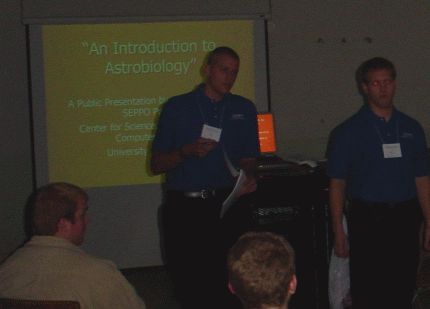
The SEPPO project involved the pairing of undergraduate science majors and education majors in performing science outreach activities. Both brought unique experiences and perspectives to the partnership that the other often did not have. Science students receive a rigorous mathematical and scientific training. They are likely to be comfortable with complex science and understand the scientific process. They are well-prepared to deal with questions about science in general. Education students have given more thought to how to convey science to others and are more likely to have excellent communication skills. They also have a better understanding of the inner workings of the classroom and the needs of teachers. Although these generalizations were not true in all cases, what was true is that the sum of the pair's abilities was far greater than those of either student alone.
The partnering of the science and education students built "collaboration into the educational system". When the science students become the scientists of the future and the education students become the teachers of the future, they will have had positive experiences in working together, will recognize the value of such collaboration, and will feel comfortable interacting in such relationships. The recipients of our programs witnessed the future scientist and teacher working together and gained an appreciation for the benefits of such collaboration.
The SEPPO project was funded by the NASA IDEAS program and was active from August, 2006 through May, 2009. Many aspects of the project worked extremely well and we found no shortage of organizations eager to take advantage of our offerings. We had very high retention – almost all of the undergraduate SEPPO presenters were involved with the project from the time of joining until either graduation or the expiration of funding. We hope to identify funding in the future for a more substantial version of SEPPO.
Below we pictorially summarize some of the events of SEPPO.

SEPPO students made a variety of public presentations over the course of the project. These included talks on:
These presentations were led by PowerPoint but included computer simulations, movieclips, and physics demonstrations – every effort was made to make them an interactive experience for the audience.
Talks were given to public audiences at Behlen Observatory. An article in the Daily Nebraskan covering our public talks at Lincoln Libraries can be found here.
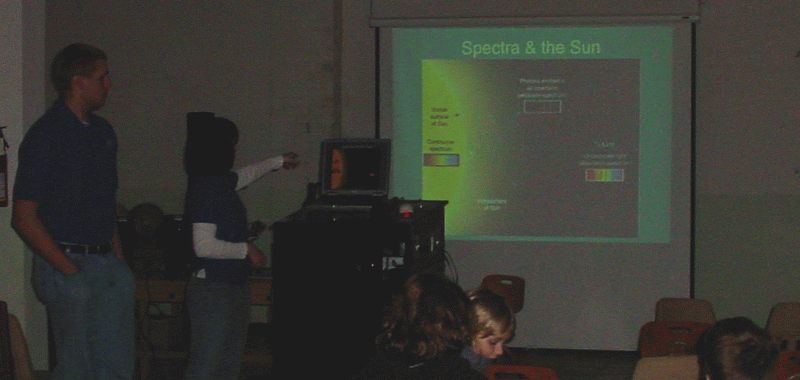
We taught several science clubs through the after school programs of the Lincoln Public School's Community Learning Centers. These were weekly clubs that met for 8 weeks at Culler and Dawes Middle Schools on "Light and Stars" and "The Physics of Everyday Objects".
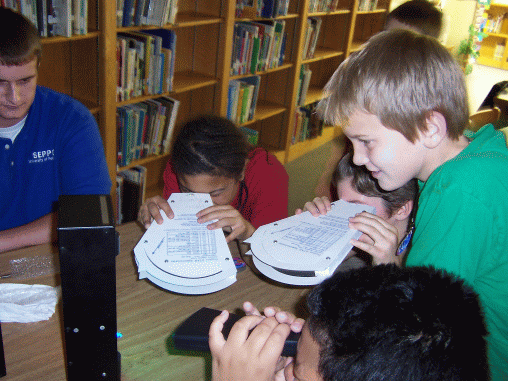
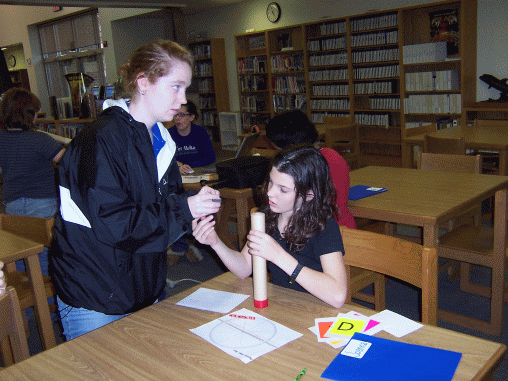
We also helped out quite a bit at the UNL Department of Physics' Saturday Science Program. This programs meets over 4 Saturdays in February and hosts about 100 5th-graders from Lincoln Public Schools.

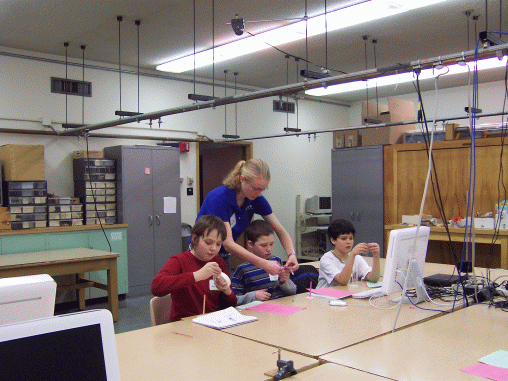
SEPPO had more requests than it could accommodate from 4-H, boy/girl scouts and all sorts of science fairs.
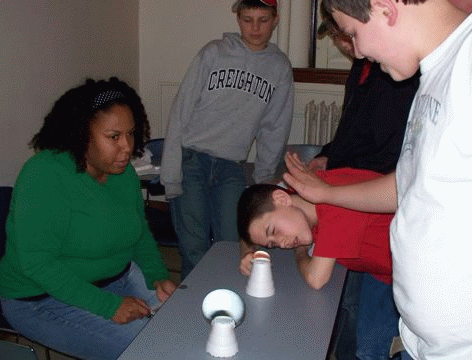
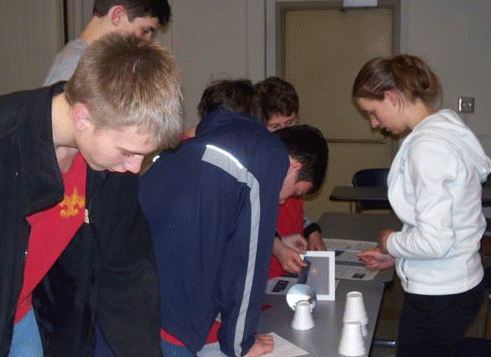
Pictures from similar events at the UNL Extension in Lancaster County 4-H Clover College can be found on building spectrometer kits here and building telescope kits here.
Coverage from an all day 4-H event in Pawnee City involving a 3-hour science workshop, dinner, movie, and skyshow can be found in the Pawnee Republican here.
SEPPO set up demonstration booths on several occasions.

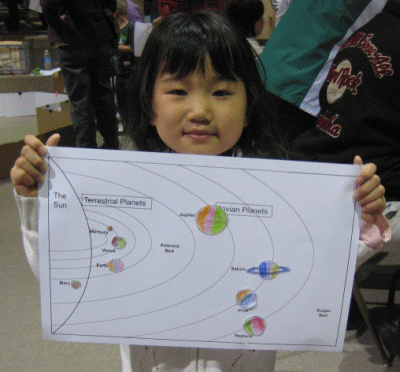
Our most regular events were the Behlen Observatory Public Nights where kit building, activities, and physics demonstrations could supplement presentations and telescope viewing.


Coverage of a Behlen Observatory Public Night Demo room focusing on angular momentum in astronomy may be found in the UNL Scarlet here.
Go back to the main SEPPO page by clicking here.